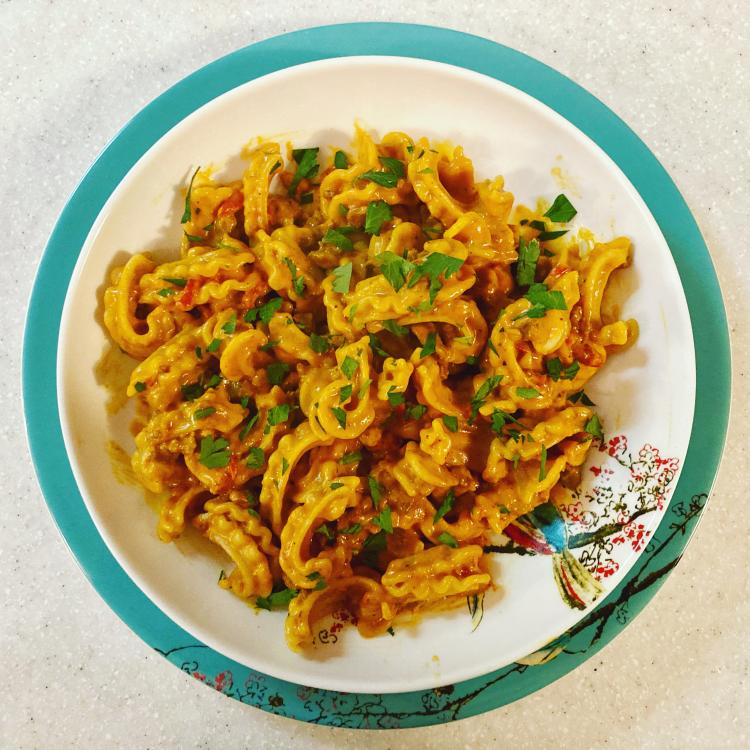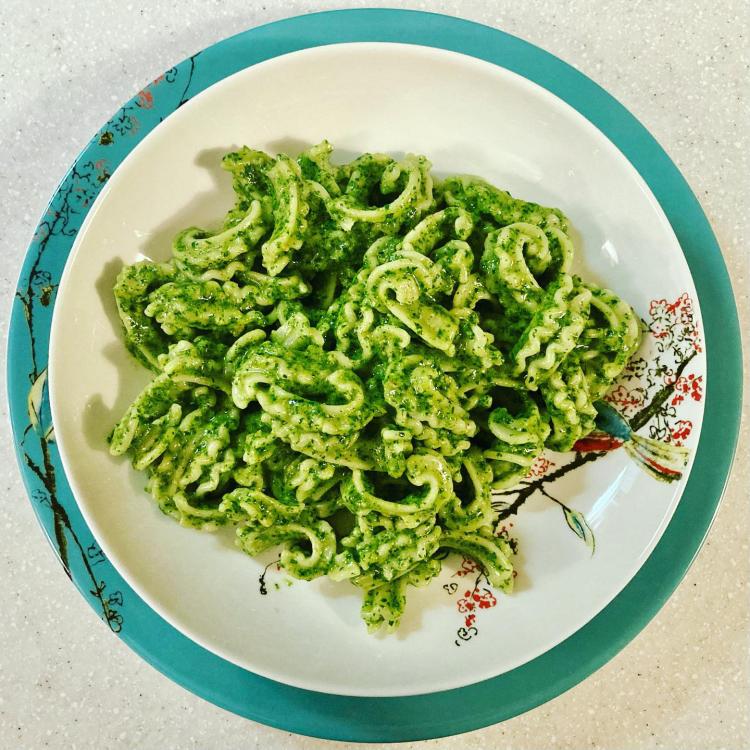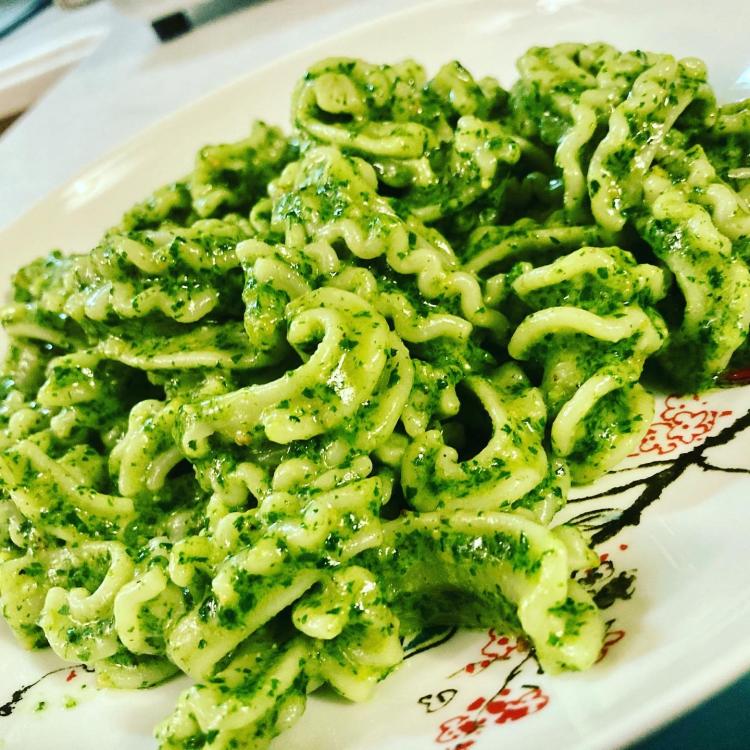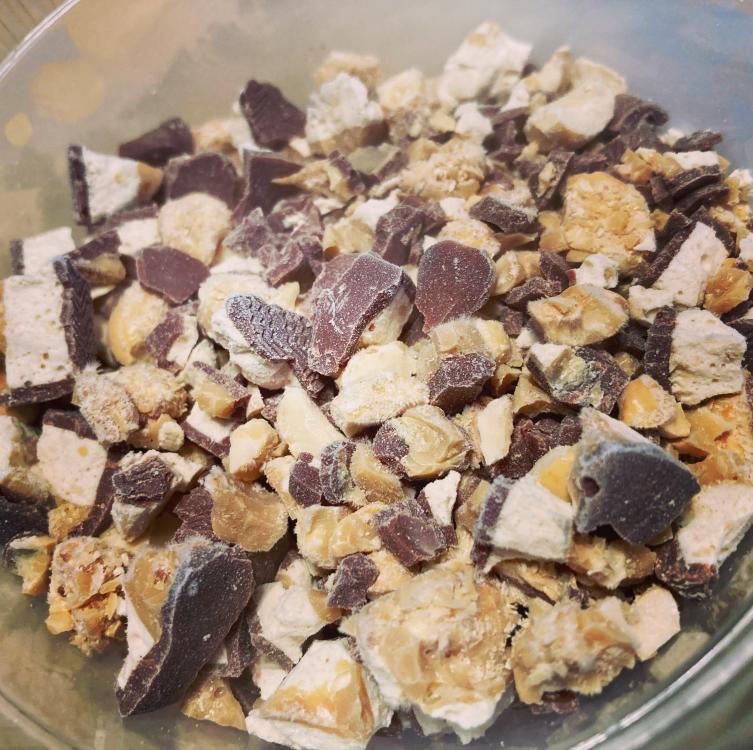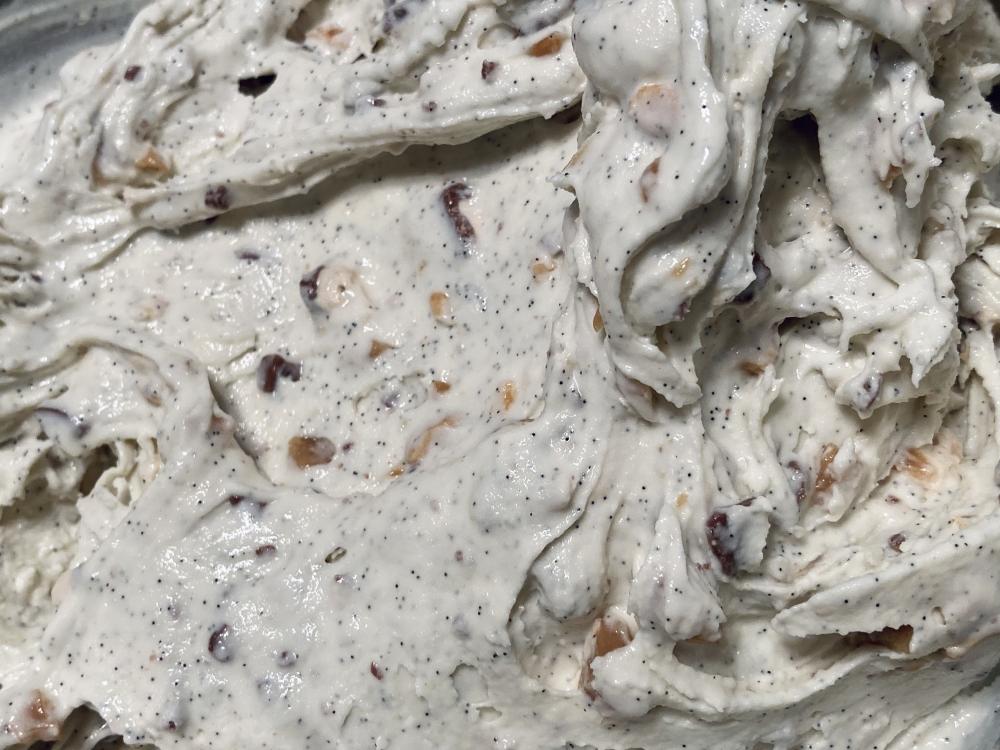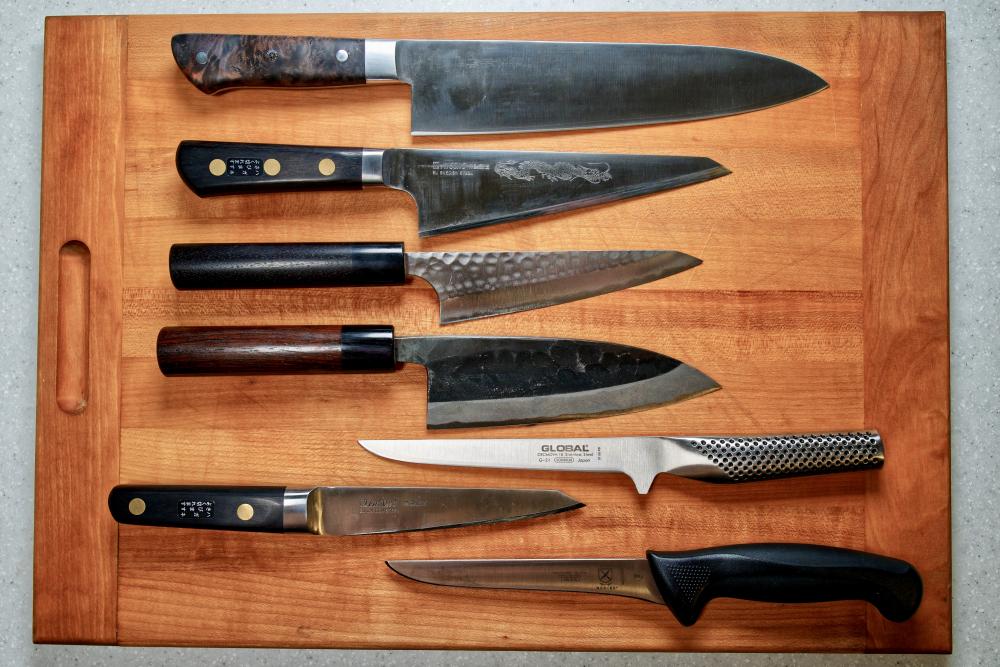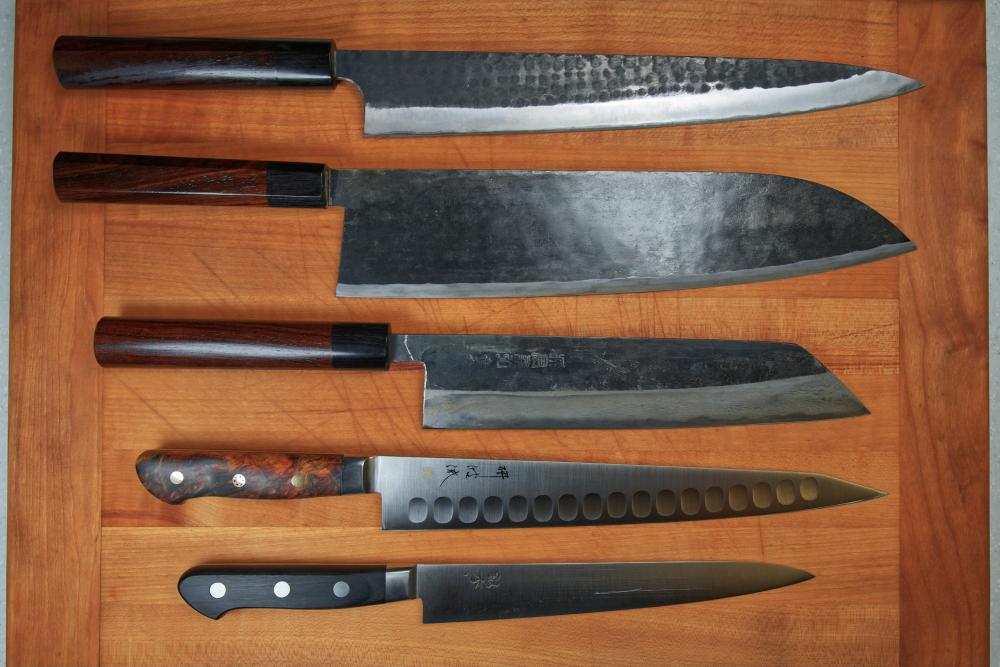-
Posts
1,807 -
Joined
-
Last visited
Content Type
Profiles
Forums
Store
Help Articles
Everything posted by btbyrd
-
I don't know why I didn't think to Google it, but it appears to be a statewide issue. A lot of the purported explanations (e.g., glass shortages, increased demand during COVID) don't make sense because neighboring states don't seem to be having issues. Apparently a big part of it is a lack of truck drivers. All of the liquor in the state comes through a single warehouse. What could possibly go wrong?! This is apparently impacting bars and restaurants as well as individual consumers. Another government success story! And so my hatred of the ABC Commission continues to grow.
-
There is a massive lack of availability in my local liquor market, which is a poorly administered government monopoly in North Carolina. Here the only stores selling spirits are ABC stores run by local Alcohol Beverage Control boards that are accountable to the State ABC commission. It is a freaking nightmare right now. I went looking for tequila yesterday and the entire section was wiped out. It was in a similar state in two other visits I've made over the past month. Zero bottles of Patron, Don Julio, Cabo Wabo, Herradura, Espalon, or Milagro. Just rotgut and one or two $80+ bottles. The problem extends throughout the store. They had no Jack Daniels, except for a 375ml bottle of barrel proof. I got the last bottle of Wild Turkey 101. This was in off-peak hours on a weekday. Other customers were complaining about how they've been having trouble as well -- one gentleman was trying to get tequila for an upcoming vacation, but was distraught that nothing halfway decent was available. I asked the manager if the border with Mexico had been closed. He replied: "It looks like it." Well yeah, sir. That's why I asked. Is it like this other places? Is this a COVID thing? Or is this just bureaucratic incompetence? I've always hated our ABC stores, especially after living in areas with free (or freer) markets like Chicago. But this is intolerable.
-
It all depends on what the goal is. If the goal is to hack an animal up and simmer it for half a day, it can be proper to hammer it with a machete into tiny bits (or, less rustically, use a bandsaw or whatever to do the same thing). If the goal is to cook each part of the animal in ways that are tailored to that specific part of the animal, a more nuanced and time-consuming (and skilled) approach to butchery is proper. I wouldn't ruin goat chops by stewing them forever, and I wouldn't try to grill goat cube mystery bits. At any rate, neither style of butchered meat is "proper" without respect to a culinary purpose. But there is a difference in the amount of skill required to produce them. Earlier in the thread, I referred to the "cube it up" approach as "artless butchery." I'd stand by that. I wouldn't say it's improper. I wouldn't even say that it's bad or less desirable. It all depends on what you're trying to do with it. But given my preferences and eating experiences, I don't care for that style of goat. I'd actually probably like it more if the dishes I'd tried used larger pieces of of goat instead of the small cubes that all the Indian, west African and Jamaican places I've been to seem to use. On these, the meat to bone ratio is dismal, which wouldn't be a problem on a larger bone. I don't mind boney spare ribs, for example, because even though there's a lot of bone relative to meat, it is easy and satisfying to gnaw off. I find the tiny cubes tedious and annoying; I don't enjoying having to have my "mouth radar" on all the time while dining. Again, these are statements of personal preference. YMMV. I bet the goat cubes are great for making stock.
-
Another cascatelli dish. This time with creamy roasted red pepper sauce and spicy Italian sausage. Photo is pre Parm.
-
Huh. Maybe it's just cultural. In any event, I find cubed goat to be artless butchery and a tedious eating experience. The "hack the whole thing into unidentifiable tiny bits and throw it in the stew pot for ten hours" approach to cookery will never be my favorite. Grind it, for God's sake. Goat burgers are delicious. I'll add that there are plenty of delicious ways to cook goat on the bone that don't involve mincing the carcass. Put the whole thing on a spit and roast it over coals. Or throw it on the smoker. Braise the legs and shanks. I've heard the ribs are supposed to be pretty good. So is the neck. Rack of goat, anyone? Heritage Foods started a yearly celebration of goat meat that happens every October, when male kids are prime for harvesting. It's called "Goatober." The original idea was to raise awareness of this delicious and sustainable meat by showcasing it in restaurants in New York, but it's been growing beyond that mission in recent years. Goatober has a website and an instagram feed, both of which are worth exploring if you're keen to get inspiration on how best to prepare goat. Chef Stephanie Izard is also a good place to look to for inspiration on goat preparations. Hers is the only goat I've eaten that didn't fall into the "hacked and boiled" category; I had a goat burger and confit goat belly. Both were incredible. I wish more placed cooked goat and more markets sold it. I'd certainly eat it more often.
-
I've had it a few times, mostly at Indian buffets, and thought the taste was fine (as far as one can judge the flavor of something swimming in curry). The form factor, however, was terrible: bone-in cubes. This is also the only format I've seen goat for sale in supermarkets. I like bone-in meat as much as the next person, but I prefer the bone to be more or less intact -- or for there to be so much meat around the cut bone that it's worth eating (like on a cross-cut shank). But these boney, unidentifiable cubes from every part of the animal are a chore to eat and seem to be a sad artifact of industrial butchery. I'm sure it's more efficient to deep freeze a goat carcass and hack it into cubes than it is to cut it into primals and individual cuts. But I'm sure it's not more delicious.
-
That's $17.99 for four pounds, which is much more reasonable. Shipping costs can vary a lot, especially internationally. Word on the street is that they're trying to figure out how to offer it to an international audience at reasonable prices, but that may take a while.
-
The nut flavors always work in the background, at least in the proportions I normally use. The pine nuts at the market were $20/lb and low quality, so I did what I usually do and sub pistachios o(or pumpkin seeds). These pistachios were lightly toasted and had good flavor, but the herbs, parm, and garlic are all more assertive. I used mostly basil, but also included chives, parsley, and arugula. Herbs got blanched and chilled in ice water, which makes the color pop. Added a dash of ascorbic acid to help keep it bright.
-
Cascatelli with pistachio pesto. First time cooking this shape, but it lives up to the hype. Holds sauce like nobody’s business. Toothy. Forkable. Will be cooking more soon.
-
I don't have a grill press and have been thinking of picking up a couple of Chef's Presses because I like the design of them better than the alternatives. I have held off on the purchase because I don't know that I'd actually use them. But all things considered, $14 or $19 isn't a bad price for what you're getting. You could pay a lot more for a much simpler design. Like this $150 Pressy Downy thing.
-
I’m going to have nightmares after seeing how they cut that fish.
-

Heritage and Heirloom Foods - Do The Words Now Mean Nothing?
btbyrd replied to a topic in Kitchen Consumer
If it says “heritage” or “heirloom” but doesn’t specify the variety, I walk on by. -
+1 for the generic squeeze bottle (like the generic red tabletop bottle) as the superior ketchup dispensing option. The upside down ones are fine for dispensing big blobs of dippable ketchup, but if you need to lay down a controlled amount on a bun, the classic squeeze bottle is unparalleled.
-
The classic Vitamix is on sale for $278.99. (eG-friendly Amazon.com link) https://www.amazon.com/dp/B008H4SLV6/
-
Of course, having a long wait list for something doesn't mean that it makes sense. Business sense, sure. But selling $335 vegan meals as "sustainable" is either laughably naïve or grotesquely disingenuous. Humm's implication that anything animal-based is somehow unsustainable is obviously false and does a real disservice to farmers, fishers, and purveyors who responsibly produce and source animals for culinary use. There are a bunch of good reasons to have a plant-based fine dining menu, but sustainability isn't one of them. Nothing about fine dining is sustainable. It's a luxury pleasure business.
-
I got a similar credit.
-
Did my first spin of the year with some Philly style vanilla with some cryoshattered Snickers shards. It was my father in law’s birthday, and Snickers are his fav. I froze the Snickers bars in liquid nitrogen and bashed them up inside a bag. The size and shape were perfect but, in retrospect, I ended up using too many and the inclusions made the ice cream a bit too chunky for my taste. Luckily I saved half the vanilla base and can use the remainder in moderation as a topping. Shattered Snickers: I didn’t get a good photo of the final plated scoops, but did get a not-so-beautiful shot of the base just before serving. It was delicious and a good time was had by all.
-
Not really. All the knives are more or less purpose driven, so I tend to use one or two knives per task. Use one knife to cut off a fish's head and remove its filets, another knife to remove the skin and portion it. Use one knife to remove the bones from a rib roast, another to slice it. For butchery knives, I have two Western debas (one large, one small), two poultry knives (one large, one small), one knife for boning mammals, and two western style boning knives (one stiff, one flexible) that I got way back before I got seriously into kitchen knives. The top knife is a Tojiro DP 240 Western deba. It has the profile of a chef's knife, but is almost 5mm thick the whole way down. Debas are technically fish butchery knives, but a 240 deba with a double bevel is a monster knife that is game for almost any abuse. For butchery tasks, I use it whenever I need to go through poultry bones, like for bone-in fried chicken. I also use it to separate cooked ribs. But it's good for pretty much any heavy kitchen use. A true multi-tasker. Everything else more of a specialist knife. The smaller Western deba is used to take the head and filets off fish. Because it's double bevel, it's sturdy enough to deal with poultry bones, but I generally use the big one for that. I have used it to trim my Christmas tree for the past several years. Under the big deba are the poultry knives, a garasuki and a honesuki. The larger garasuki is super thick and useful for breaking down turkeys and ducks (and also chickens) while the smaller honesuki is thinner and primarily suited to chickens (though it can also be used for trimming). I took a pretty deep dive on yakitori a couple years back, and these knives are the backbone of yakitori butchery. The hankostu is for boning out beef, lamb, and pork. I use it the few times a year I French a rib roast, debone a lamb leg, and to remove the bone from the occasional pork shoulder. I have 3 slicers/sujihiki. A 300mm one that's very stiff, a 270mm hollow ground one with a good amount of flex, and a lasery thin 210mm suji/petty. They're all useful for different things. The small one lives on my knife block and gets used alongside my normal chef's knives in daily rotation. It's good for trimming, butterflying, and for slicing smaller items like cooked chicken breast or whatever. The flexy suji is useful for removing the skin from fish and portioning it. It's also a good slicer for things like country ham and smoked salmon. The longest, stiffest suji is my carving knife for large roasts. It's also good for slicing raw fish for crudo or nigiri or whatever. The other two knives in the portioning/slicing section are just chef's knives that also work well for butchery-adjacent tasks. The big one has a balance point way out front, and this makes it great for slicing, say, a striploin into steaks or a pork loin into chops. It's also my go-to watermelon knife. The shorter one with the drop-point has an extremely flat profile and is thicker than many of my other chef's knives, exhibiting zero flex. This makes it work very well as a slicer for both meat and fish. But the flat profile also makes it an absurdly good chopper. It's a great knife for cutting vegetables. Do I need all these knives? No. Are they the best tools for their respective jobs? Pretty much. I think this is my favorite poem of yours.
-
My butchery knives. These are all meant to work around bone (and sometimes go through fish and poultry bones). These are for slicing, portioning, and trimming.
-
Chips in the blade can be sharpened out, especially if they're small.
-
Just because something is cleaver-shaped doesn't mean it's useful for cutting through or around bones. That Dexter pictured above is one such example. Cleaver? Yes. Butcher knife? No. Same for that Lamson/Leone take on the Serbian cleaver. If you want a Chinese cleaver designed to hack through bones, get a CCK Bone Chopper (or, for somewhat less demanding but still heavy tasks, a Big Rhino, which has the same design as the knife liuzhou linked above).
-
All their wood core boards are dishwasher safe, as per their website.
-
I've looked far and wide to find smoked NC country ham that can compare to what's on offer from Virginia, Kentucky, and Tennessee, but sadly I haven't been able to find anything decent. Johnston Country Hams used to produce some good products, but they unfortunately went out of business after a listeria recall. Here smoked hams are the exception, and I haven't been able to find one that is both smoked and aged long enough to develop the sort of rich savoriness I associate with good ham. Most NC ham is unsmoked, made from commodity pork, and seldom aged much longer than 90 days. If young, unsmoked hams from unexceptional pigs are your thing... I guess NC has a lot to offer. But sadly, here in the foothills of the Blue Ridge, I have to import the good stuff from elsewhere.
-
Line the pan with foil?
-
It would be clearer if they used words instead of symbols. "X Dishwasher Safe" is far less clear than "Not Dishwasher Safe." The good news is that if your boards aren't warped yet, they'll be fine.



